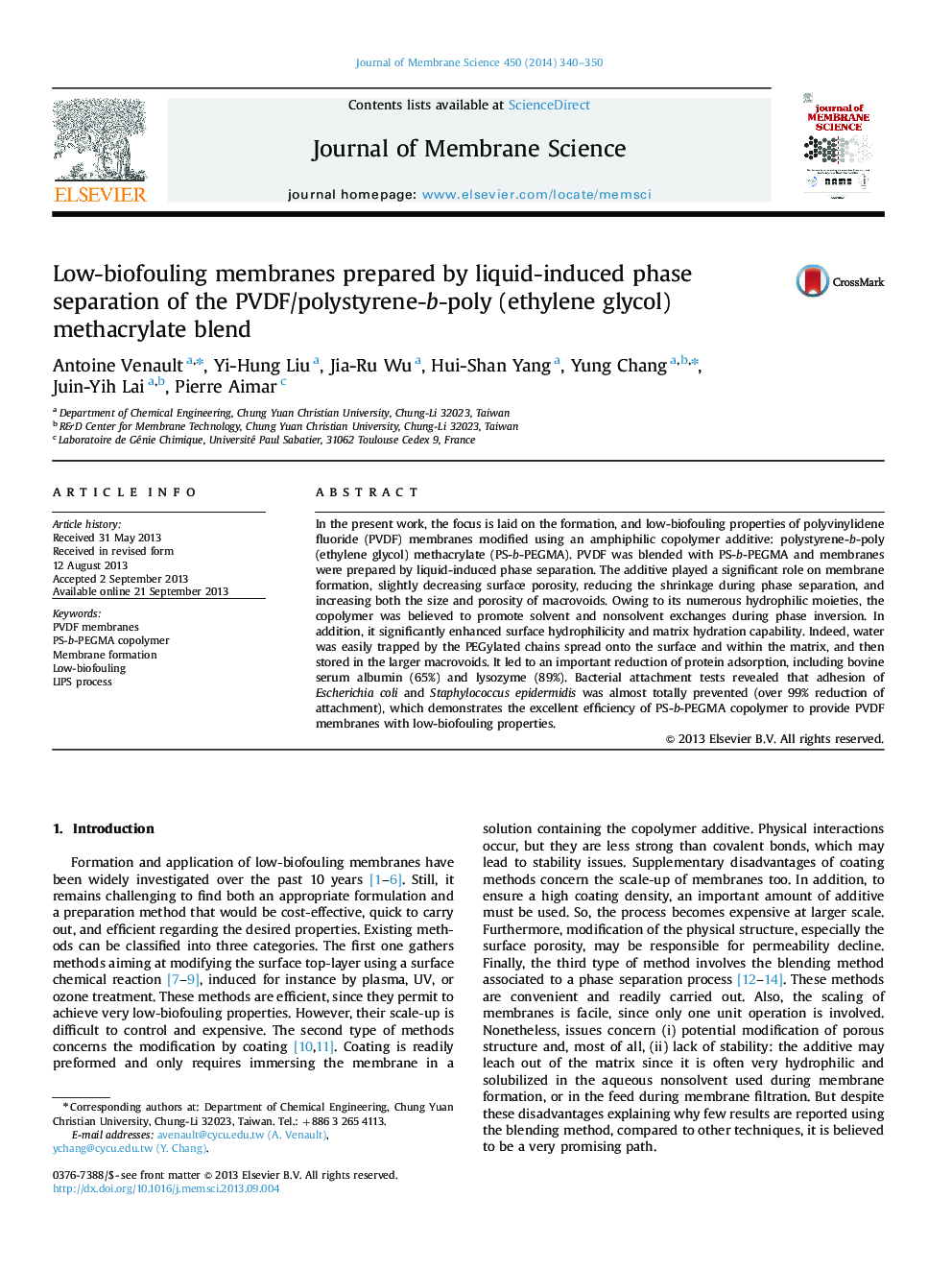| Article ID | Journal | Published Year | Pages | File Type |
|---|---|---|---|---|
| 633857 | Journal of Membrane Science | 2014 | 11 Pages |
•PVDF membranes prepared using PS-b-PEGMA amphiphilic copolymer.•Effect of amphiphilic copolymer on PVDF membrane formation.•Influence of amphiphilic copolymer on hydration properties of PVDF membranes.•Correlations between protein adsorption, bacterial attachment and hydration properties.
In the present work, the focus is laid on the formation, and low-biofouling properties of polyvinylidene fluoride (PVDF) membranes modified using an amphiphilic copolymer additive: polystyrene-b-poly (ethylene glycol) methacrylate (PS-b-PEGMA). PVDF was blended with PS-b-PEGMA and membranes were prepared by liquid-induced phase separation. The additive played a significant role on membrane formation, slightly decreasing surface porosity, reducing the shrinkage during phase separation, and increasing both the size and porosity of macrovoids. Owing to its numerous hydrophilic moieties, the copolymer was believed to promote solvent and nonsolvent exchanges during phase inversion. In addition, it significantly enhanced surface hydrophilicity and matrix hydration capability. Indeed, water was easily trapped by the PEGylated chains spread onto the surface and within the matrix, and then stored in the larger macrovoids. It led to an important reduction of protein adsorption, including bovine serum albumin (65%) and lysozyme (89%). Bacterial attachment tests revealed that adhesion of Escherichia coli and Staphylococcus epidermidis was almost totally prevented (over 99% reduction of attachment), which demonstrates the excellent efficiency of PS-b-PEGMA copolymer to provide PVDF membranes with low-biofouling properties.
Graphical abstractFigure optionsDownload full-size imageDownload high-quality image (215 K)Download as PowerPoint slide
